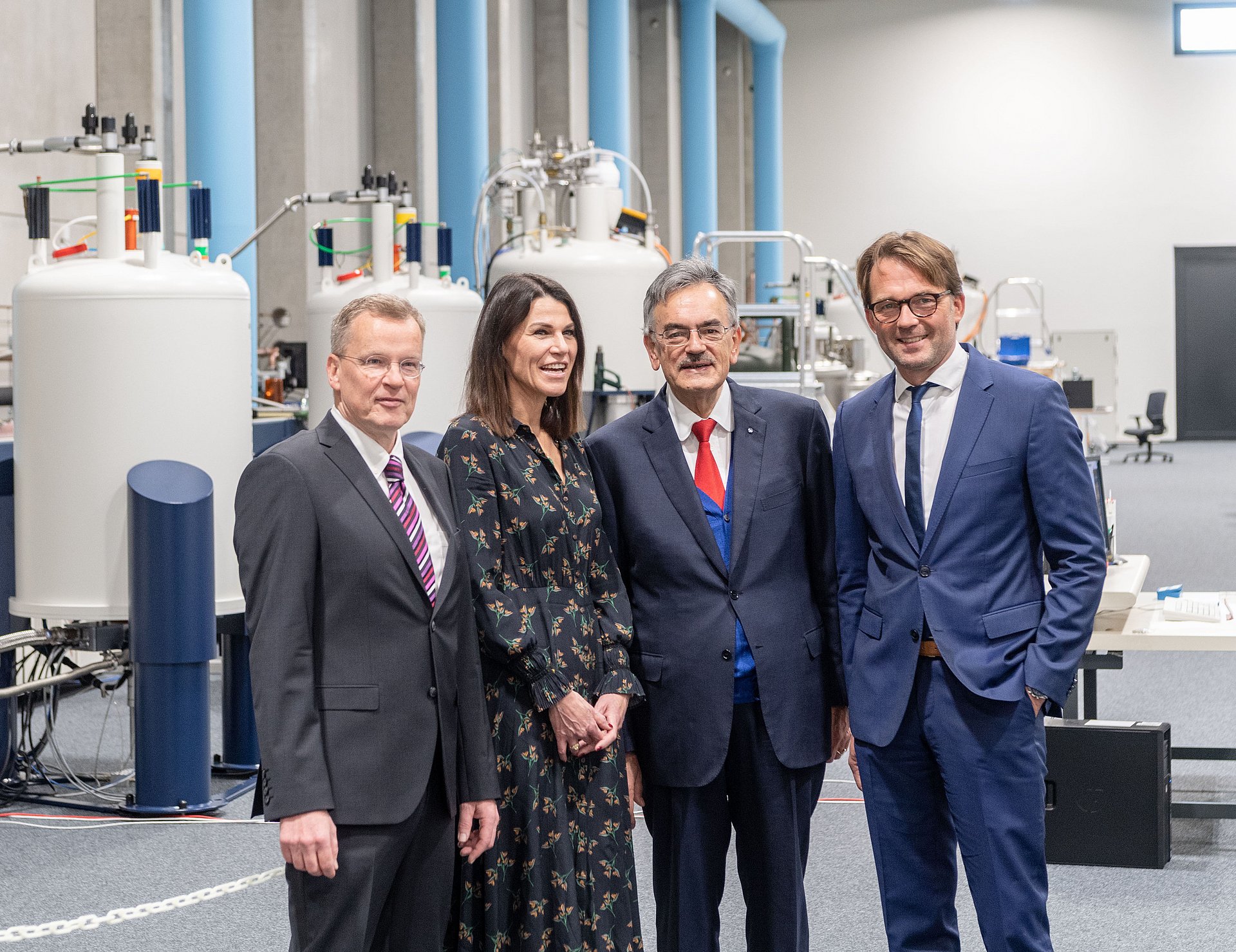World's highest performance Nuclear Magnetic Resonance spectrometer for biomedical research
Newly constructed Bavarian NMR Center opens at Technical University of Munich

Nuclear Magnetic Resonance (NMR) is the most comprehensive and high-powered method for chemical structural determination, in particular for complex biological systems. Since 2001 TUM has consolidated its activities relating to this field at the Bavarian Nuclear Magnetic Research Center on the TUM Garching campus. The majority of the space in the new structure which opened today is the 690 square meter by eight meter high NMR hall. Eight high-field spectrometers and the soon to be available 1.2 GHZ device make it possible to gain new insights into the spatial structures and dynamics of proteins. Since proteopathy and malfunction of proteins can cause serious illnesses such as cancer or Alzheimer's, research at the NMR Center is intended to develop new medical treatment possibilities. In the future researchers from the faculties for Chemistry, Physics and Medicine at the School of Life Sciences Weihenstephan and German Research Center for Environmental Health Helmholtz Zentrum München will work together in a total of 1,800 square meters. "The new building makes cross-faculty protein research possible in previously unimaginable dimensions and opens up an unrivalled new future for our research strength in biomedicine," explained TUM President Prof. Wolfgang A. Herrmann.
Important component in TUM's overall biomedicine concept
Together with the recently opened tumor research facility Center for Translational Cancer Research (TranslaTUM) and the future Multiple Sclerosis Center of the Tschira foundation at university hospital TUM Klinikum rechts der Isar, the new building is a milestone in TUM's overall biomedical concept. Located in the immediate vicinity, the TUM Center for Functional Protein Assemblies will represent another new building devoted to biomedical protein research. As an "Integrative research center" the Munich School of BioEngineering will create a cross-faculty instruction and research platform including the medically relevant engineering and IT technologies. The concept will be enhanced in the direction of avant-garde biotechnologies through a large number of partnerships with professorships in Garching, Weihenstephan and Straubing.
Because of its trans-regional significance, the German federal and Bavarian state governments have shared the approximately 34 million Euro investment costs in the new construction of the NMR Center. German Research Center for Environmental Health Helmholtz Zentrum München contributed 3.5 million Euros to the purchase price of the spectrometer.